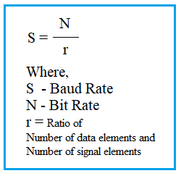
Applications of BPSK Modulation
Explore the diverse applications of Binary Phase Shift Keying (BPSK) modulation in satellite, wireless, and deep-space communication due to its simplicity and robustness.
Showing 20 posts (Page 2 of 8)
Advertisement

Explore the diverse applications of Binary Phase Shift Keying (BPSK) modulation in satellite, wireless, and deep-space communication due to its simplicity and robustness.

Explore the diverse applications of QPSK modulation in cellular networks, satellite communication, Wi-Fi, and more. Learn how QPSK balances spectral efficiency and robustness for high-speed data transmission.

Explore the pros and cons of Amplitude Shift Keying (ASK) modulation, including bandwidth efficiency, noise susceptibility, and application suitability.

MATLAB source code for beamforming with QAM modulation, including output plots and mathematical equations. Explore analog, digital, and hybrid beamforming techniques.

Understand the difference between bit rate and baud rate in data communication, including formulas, units, and their relationship to bandwidth and data transmission speed.

Explore the fundamental differences between bits and symbols in data communication, including their format, usage, measurement units, and applications.
VHDL source code for BPSK modulation, including links to BPSK modulation basics for fundamental understanding.

Explore the differences between BPSK and QPSK modulation techniques. Learn about robustness, data rates, constellation diagrams, and power spectral density.

MATLAB source code for BPSK, QPSK, 16QAM, and 64QAM modulation, including constellation diagram plots. Learn about data mapping.

Explore the advantages and disadvantages of Binary Phase Shift Keying (BPSK) modulation, including its robustness and power efficiency, alongside its limitations in data rate and bandwidth efficiency.

Learn about Binary Phase Shift Keying (BPSK), a digital modulation technique representing binary data with different carrier phases, and its applications in wireless communication.

Explore the differences between C4FM (Continuous 4 level FM) and CQPSK (Continuous Quadrature Phase Shift Keying) modulation, their applications, and signal characteristics.

Learn about Carrierless Amplitude Phase Modulation (CAP), a variation of QAM used in xDSL, its advantages, disadvantages, and historical context.

Explore the differences between CCK, DSSS, and OFDM modulation techniques used in WLAN standards for varying data rates and coverage.

Explore CDSK (Correlative Differential Shift Keying) using chaos signals, its implementation, advantages, and methods for BER improvement.

Explains the distinction between 'chip' and 'chirp' in LoRaWAN, clarifying their roles within Chirp Spread Spectrum (CSS) modulation for long-range, low-power communication.
Explore the distinct roles of codecs and modems in telecommunications, focusing on their functions in data compression and signal modulation for efficient communication.

Explore the differences between constellation and eye diagrams, their applications in digital modulation, and how they represent signal characteristics.

Explore the fundamentals of cordless telephone systems, including components, duplex communication, frequency allocations, and advanced systems.

Understand the difference between cross modulation and intermodulation in RF systems, including causes, effects, measurement, and applications.
Advertisement